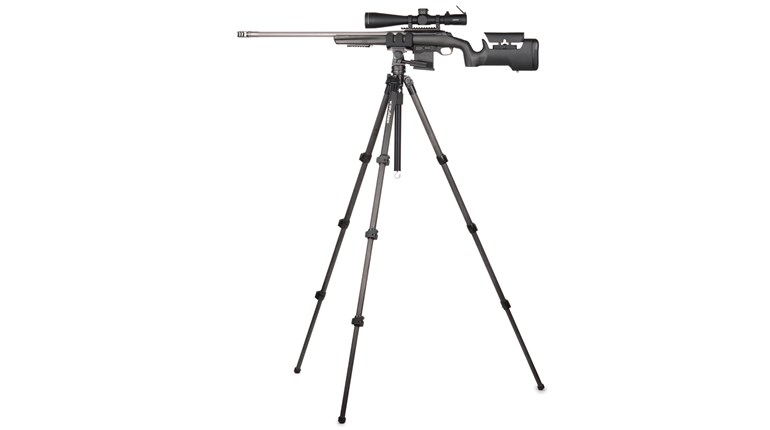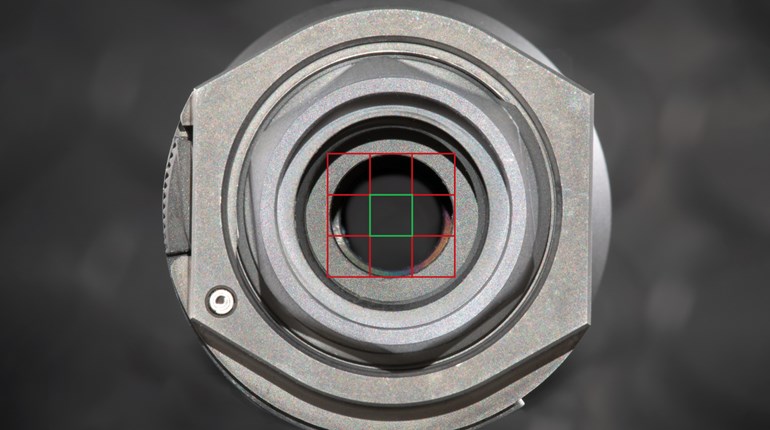
High-tech optics and electronics help us see in low-light conditions, but training under the same types of low- or no-light scenarios will familiarize us with our gear, which is always a good thing.
The topic of shooting in limited-visibility conditions has received periodic coverage in these pages over the years. We have mainly focused on the techniques and equipment that help ensure proper target identification, acquisition and engagement. However, a recent conversation with a family member reminded me many rifle shooters are unfamiliar with a more immediate dimension to night work: operating and managing equipment they cannot see.
Regular practice, substantial nighttime experience or a combination of the two are required in order to be comfortable working with complex gear in the dark. I grew up in an era when it was normal for kids to roam through rural areas well into the night. Batteries were big, inefficient and expensive, so flashlights were reserved for camping trips and power outages. Night-vision gear and rechargeable lights only existed in the military realm, so they may as well have been alien technologies. By the time I was a teenager, running around in the woods and fields in total darkness came naturally to my circle of friends.
Those experiences set me up nicely for Army life, always on the hoof with a rifle in hand and a bunch of gear strapped to my body. Because I spent most of my time working in jobs that required extreme stealth, night was always my ally. Shining a visible light is a no-no in both training and real-world, professional-tactical work, and even the best night-vision gear is not particularly helpful with equipment that is on or close to your body. One quickly figures out how to find and operate everything by feel when working in that world.
The techniques for operating efficiently in blind environments are pretty straightforward. The first rule is to streamline everything. That means paring down rifle attachments so you will have fewer things to feel around or get tangled up in other gear. Operating a rifle without looking at the controls is easy enough, but more complex tasks actually take more practice. This is doubly true if you need to stay quiet. What if you encounter a problem while trying to chamber a round? Can you diagnose and remedy it without making yourself into a sound or sight beacon? Simplicity of setup is your friend when the lights are out.
As reliable as modern rifles are, it still pays to work on clearing malfunctions by feel. For safety’s sake, this should normally be done with some form of light. But, knowing how to do it in complete darkness may prove helpful if you are ever in a situation where turning on even a single LED bulb will turn you into a target. Start by simply closing your eyes as you get used to navigating your guns and gear by feel. Using dummy rounds only, have a friend mock-up a malfunction and work your way through it with closed eyes. Wear a blindfold if you have a peeking problem.
Finding the supporting equipment that is not attached to your rifle—like spare magazines—has its own set of challenges. If reloading has been practiced frequently enough during normal training routines, a little additional work without the crutch of looking at a magazine pouch, mag well or loading port will help solidify the process in your brain. Right about here is where the “Wait, why are we still trying to be stealthy in the middle of a theoretical gun fight?” question comes up.
The answer is simple: Whatever situation you find yourself in, if it involves incoming bullets, the last thing you want to do is make it easier for someone to aim at you. So, while you may have already exposed your location through muzzle flash, the idea is to not stay exposed or in the same spot, fumbling for another magazine. Move to cover or make yourself real small, then get your rifle back in action without the aid of artificial light. Fortunately, no-light reloads are fairly easy to master with a little practice.
Things get trickier when you need something you do not normally reach for—like a multi-tool or spare battery. Can you change your electro-optic’s battery by feel only? Can you even find your spare? Aside from repetitive practice, the best way to reduce the chances of fumbling through your kit is to always place things in the same spot. Most of us can find and manipulate our wallets, cell phones and EDC handguns without looking at them. Strive to have the same familiarity with rifle-specific equipment.
I configure my body-worn ammunition, trauma kit, tools and other important things the same way I did while in the Army because my brain already knows where my fingers will find whatever is needed. Such repetition is similarly useful for go-bags or larger packs. Placing your stowed items in the same place every time will make it easy to find them by feel alone.
Working with night-vision gear presents additional challenges. Simple tasks like manipulating focus and gain knobs or adjusting mounts can be difficult the first few times out of the gate. I always recommend that users of unfamiliar NV systems—including rifle-mounted scopes, IR lasers and lights—perform a couple “dry runs” with the gear in daylight (without batteries) before heading to the range for the first night shoot. Go through the motions of working switches and knobs while you can still see them. Following up with several training sessions in the dark will make things run much smoother if night shooting ever has to be done under duress.
These skills are not limited to “tactical” scenarios. Silently slipping into a pre-dawn hunting blind or stand requires the same level of gear familiarity as defensive scenarios. This aspect of hunting is a great training ground, especially if you use the same or similar equipment as you would rely on for defensive work. The bottom line is that just as with every other worthwhile skill, operating in total darkness takes both planning and practice. Once you get comfortable working in the dark of night, those things that go bump will lose their psychological advantage.


































